Syn.: Pinus himekomatsu Miyabe et Kudô
Higher classification: Family Pinaceae Lindl., genus Pinus L., subgenus Strobus (D. Don) Lemmon, section Quinquefoliae Duhamel, subsection Strobus Loudon, series Chylae P. Landry, subseries Wangianae Businský
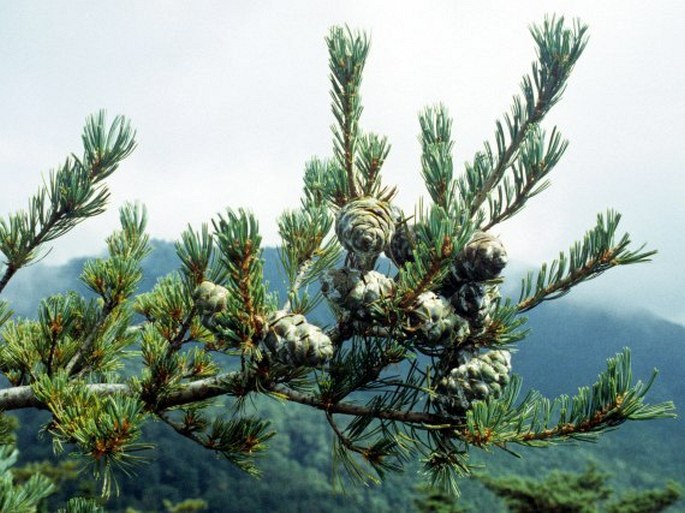
Distribution: Subendemic to Japan and occurring also on the small Korean island Ullung-do (Utsurio-to). In Japan, it is native to all four main islands with the northern limit of distribution near 43°N in southern Hokkaido and the western limit on the Tsushima Islands in the Korea Strait. Isolated occurrences are found also in two islands in the Sea of Japan, the Sado Island west of Niigata City and the Okushi-to (Okushiri) Island west of western Hokkaido.
Ecology: Suny mountain rocky ridges, ribs and slopes, occasionally in woody bottoms of broad valleys, generally between 50 and 2500 m asl. in dependence on the geographic latitude. In Hokkaido, it reaches the upper elevation limit of 800 m and from conifers is locally associated with Abies sachalinensis and Picea jezoensis. In Honshu east of the Lake Biwa (Shiga Prefecture), it occurs in the widest elevation range 300–2500 m, forming small pure stands or more often with others conifers as Pinus koraiensis (only in central Honshu), Abies veitchii, A. homolepis, Picea jezoensis var. hondoensis, P. alcoquiana, Tsuga diversifolia, T. sieboldii, Larix kaempferi, Chamaecyparis pisifera or Thuja standishii. In western Honshu, Shikoku and Kyushu, it occurs up to the highest summits reaching the top of Mt. Ishizuchi-san (1982 m, the highest point of Shikoku and southern Japan), locally associated with Abies veitchii var. shikokiana, A. homolepis, Tsuga sieboldii, Chamaecyparis obtusa or Thuja standishii.
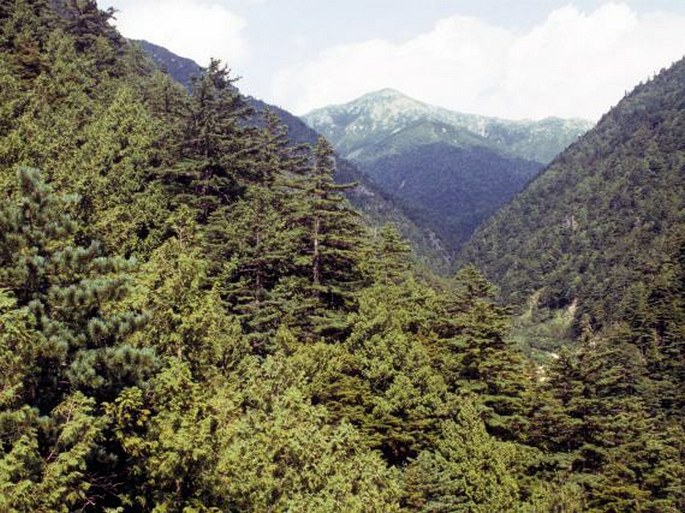
Description: Tree to 25(–30) m tall with trunk to 1 m in diameter; bark dull gray, fissured, peeling off into small scales; main branches horizontally spreading, with relatively dense secondary branching. Shoots yellowish brown, puberulent or pubescent, stout leading shoots sometimes glabrous; scales below the short-shoot insertions (cataphylls) redish brown, lanceolate, 5–15 mm long; vigorous fertile shoots addinodal. Needlelike leaves in fascicles of five, usually crescently curved, (2–)2.5–5.5(–6) cm long and (0.7–)0.75–1.3(–1.45) mm wide, with acute apex and minutely denticulate edges (with (2–)4–11(–15) teeth per middle centimeter), dark green on dorsal face and whitish green on ventral faces with (2)3–7(–9) glaucous stomatal lines; resin ducts two in marginal position at dorsal side. Male strobili reddish brown, 5–6 mm long. Ovulate strobili (conelets) usually in 3–8-merous whorls, about 10 mm long. Seed cones spreading on relatively thick, straight, 2–5(–7) mm long peduncles (often seemingly sessile), ovoid, elliptic-ovoid or oblong-ovoid with usually rounded apex when closed, (4–)5–10(–12) cm long and (4.5–)5–6.5(–7) cm wide when fully open; after seed dispersal firmly persisting for many years; seed scales woody, relatively thick, those in the middle part of the cones 18–33 × 17–33 mm; basal sterile scales around the peduncle insertion inflexed or deflected. Apophyses usually conspicuously convex distally or in the central part; umbo situated at the level of the apophysis surface to conspicuously depressed. Seeds including the relatively short and broad wing (10.5–)12–28 mm long; seed corpus obovoid, (6.7–)8–12.5 mm long, representing 33–84 % of the complete seed length; wing effective of ineffective, generally oblique, 2–19 mm long, with variable shape of distal margin (rounded to lacerate).
Taxonomic notes: Two infraspecific taxa are distinguished in Pinus parviflora, usually (in Japanese botanical literature) in the rank of variety or as subspecies, both variants using the same epithets. Due to the geographic separation of the taxa in question except their morphological differences, the classification into two subspecies seems to be more suitable. Pinus parviflora subsp. parviflora occupies the western part of the species’ geographic range, typically southwest of the Lake Biwa in Honshu and its populations are more scattered than the second taxon, Pinus parviflora subsp. pentaphylla (Mayr) Businský, occurring as the more extensive populations in the northern part of the range, mainly in central and northern Honshu and southern Hokkaido. The most reliable trait separating both taxa is the morphology of the seed wings, which are mostly ineffective, only 2–9 mm long and usually with a lacerate distal margin in the autonymic taxon, whereas they are always effective, 7.5–19 mm long and with a rounded distal margin in subsp. pentaphylla. Additional traits of both subspecies (such as length and width of leaves, length and shape of seed cones or the morphology of apophyses) greatly overlap and they can have only minor statistical significance for their delimitation.
The report of the Russian botanist L. V. Orlova (Turczaninowia 2000, 3, 1: 25–29) about an occurrence of Pinus parviflora in the Russian islands Kunashir and Iturup of the Kuril Islands is based on the erroneous determination of two infertile herbarium specimens of Pinus pumila.
Use: Pinus parviflora is a favoured ornamental tree very attractive by short and dense foliage and horizontal branches. It is important component of traditional Japanese gardens where it is used as a small dominant tree often with slightly molded habit. This pine is also used in horticulture through temperate regions of the northern hemisphere, often in more attractive cultivars characterized usually by more glaucous and dense foliage or in a combination with the dwarf habit.
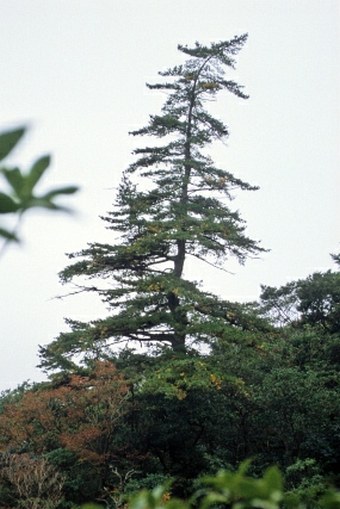
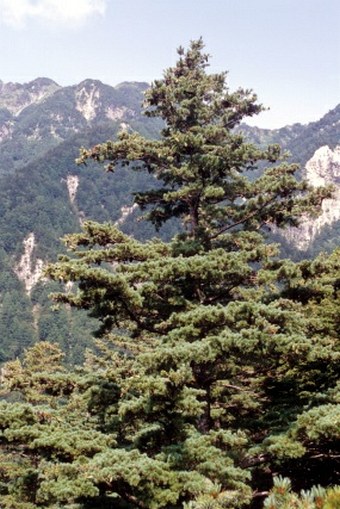
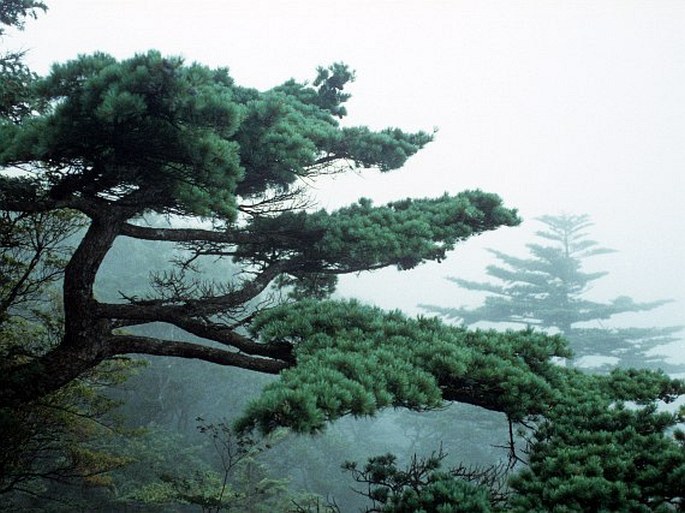
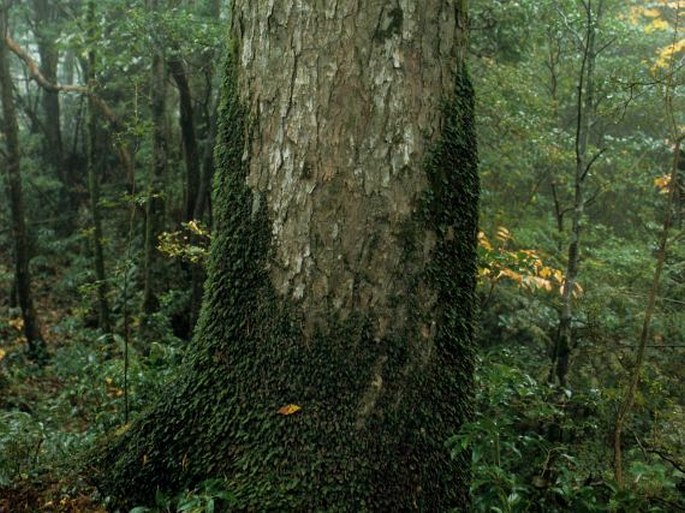
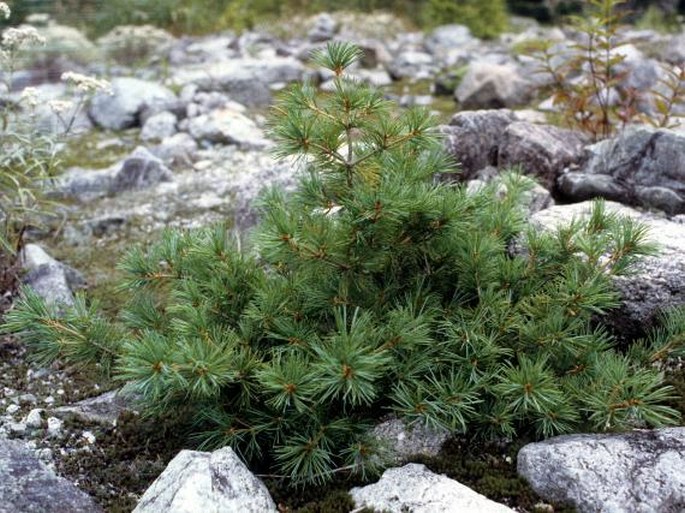
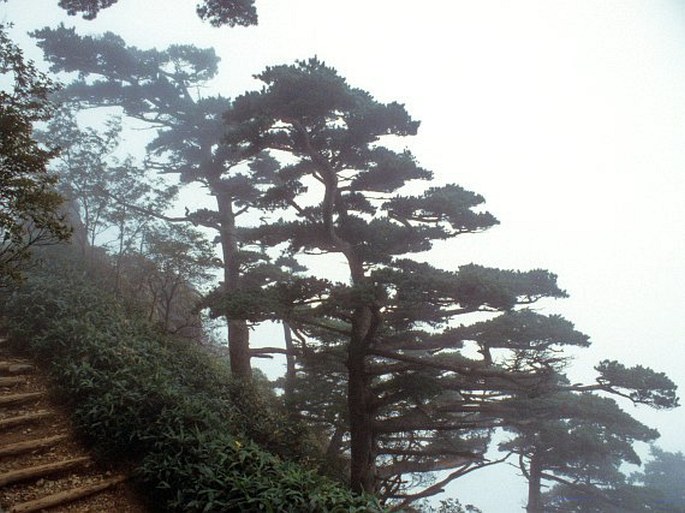
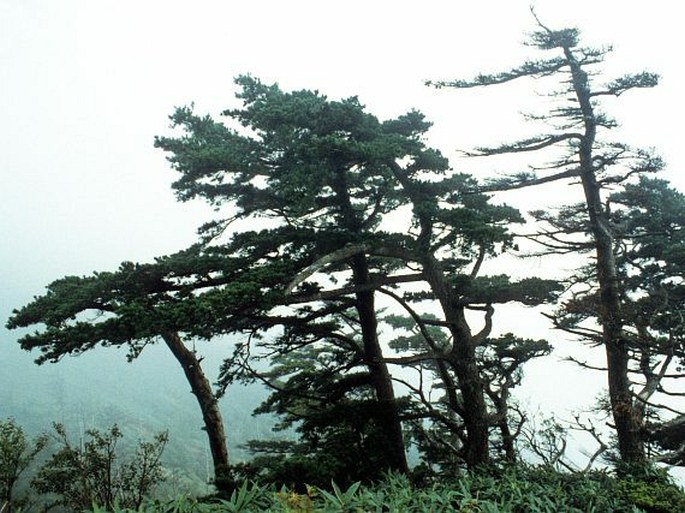
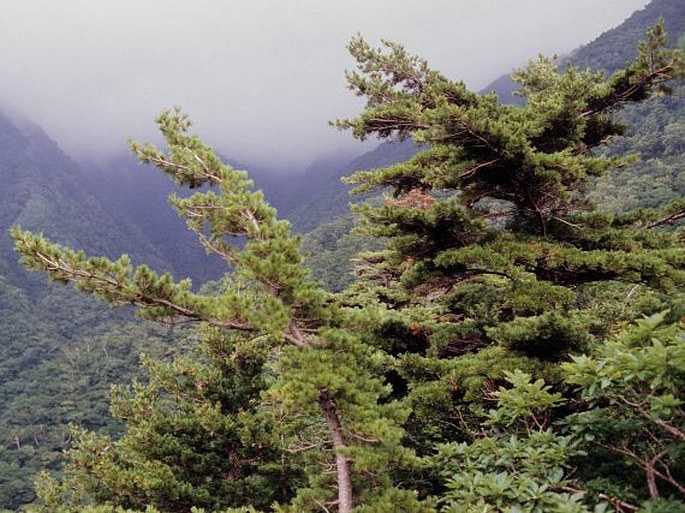
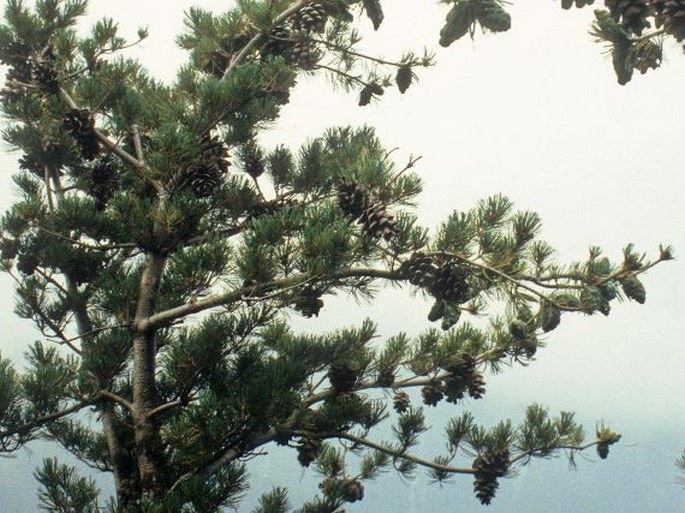
These images were taken in four native populations in Japan: Kyushu, Takakuma mountains near Kagoshima (October 30, 1991); southern Hokkaido, Hidaka mountains (August 6, 1997); Honshu, Nagano and Toyama Prefecture, Hida mountains (from August 31 to September 16, 1997); Shikoku, Ischizuchi-san massif (from September 22 to 26, 1997).


